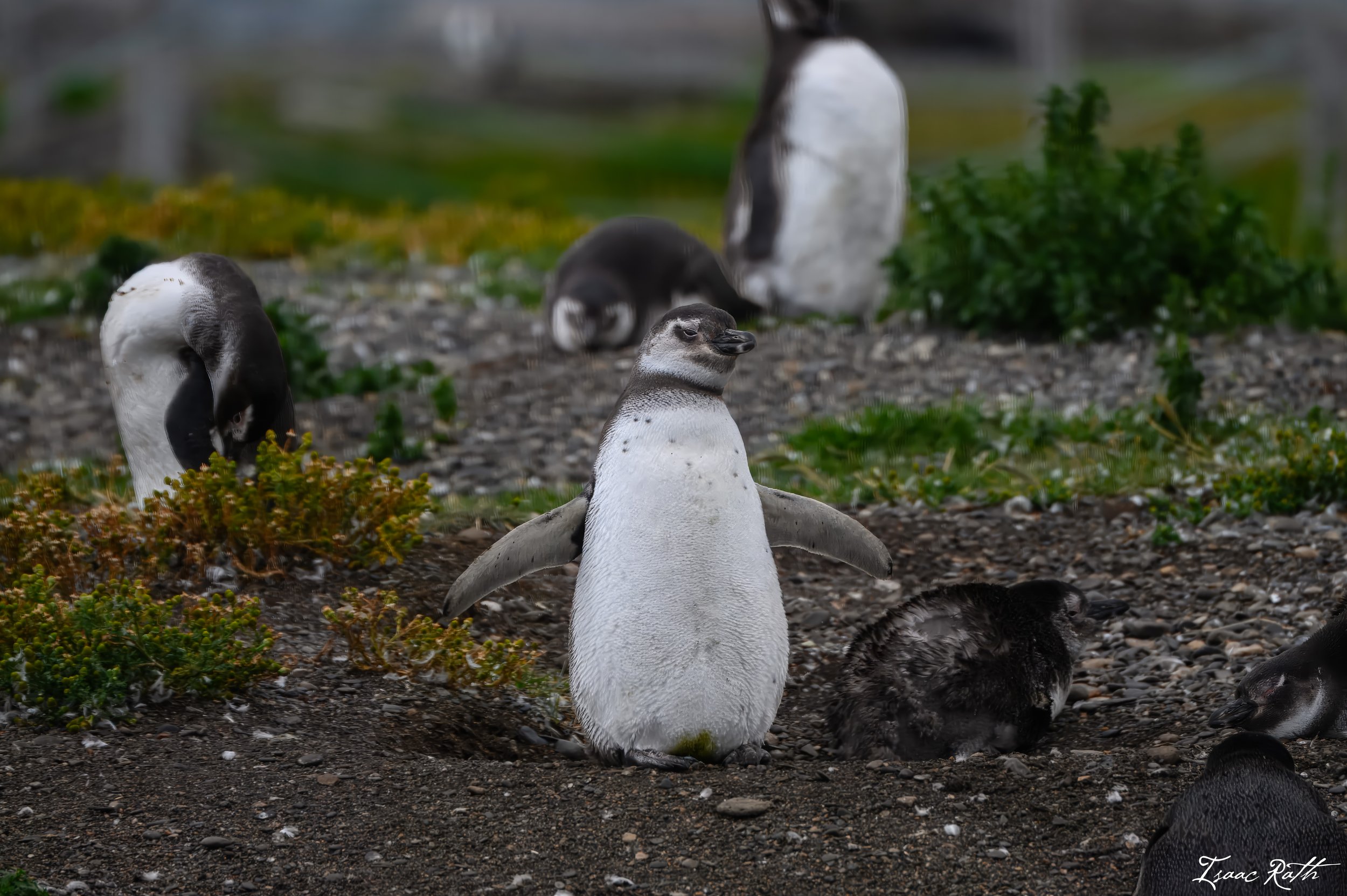Flippers Over Flight
A Chinstrap Penguin Colony at Point Wilde on Elephant Island, where 22 members of the Ernest Shackleton led Endurance Expedition were stranded for several months until rescue arrived in August 1916.
Written By Isaac Rath and Katie Milesky
Photos By Isaac Rath and Katie Milesky
-Gentoo Penguin lets Skua know he’s not welcome here.
Out of the approximately eighteen different species of penguin in the world, each and every one of them can only be found in the southern hemisphere. In January of 2025, we had the opportunity to travel south of the equator for the first time, where we were able to observe several colonies of penguins in the wild. We traveled by ship from Buenos Aires, Argentina, across the Drake Passage and down to the Antarctic Peninsula, making several stops along the way in Puntas Arenas (Chile), Montevideo (Uruguay), Port Stanley (Falkland Islands), and the southernmost town on earth, Ushuaia (Argentina).
The stop in Ushuaia was where we found and watched penguins for the first time. We disembarked the large ship to board a much smaller catamaran that took us about 3 hours away from the port to a hidden colony of both Gentoo and Magellanic Penguins. We smelled them before we saw them, and seeing as it’s summer now in the southern hemisphere, they were at the tail end of rearing their young. A lot of the juvenile penguins were nearly the size of the adults, the only difference being the fluffy down feathers they were still in the process of molting. Mixed in with the colony were a few Upland Geese, Antarctic Terns, and the occasional Skua (that the penguins were not happy to see).
-Gentoo penguin chick chasing mother for food
-Multiple Gentoo chicks chasing a parent
-Gentoo Penguin returning from sea - they must waddle their way back to the colony to feed their chick.
I’m sure you’ve seen them at your local zoo or aquarium, but just in case: Penguins are a family of birds that are completely flightless and are very awkward on land. They have short stubby legs, not really equipped for land maneuvering. They tend to waddle around, flapping their arms up and down, and when they want to lay down, they simply flop over on their stomachs. In the water, it’s a different story. These birds trade their light, hollow bones and the ability to fly for dense, heavy bones that help them to stay underwater, where they hunt for fish, krill, and squid. Until juvenile penguins get their adult feathers, they aren’t able to get in the water. Mom and Dad must take turns going to the sea to eat, then returning to the colony to find their chick to feed them. We were able to watch this several times, and it was incredible how just from a single distinct call, one chick would come running out of the crowd, knowing it was their parent who was back to feed them. Sometimes, if a chick hadn’t been fed recently or their parents had gone to sea and had been predated on by orcas or leopard seals and hadn’t returned, they would run at any parents returning, hoping they wouldn’t notice and they could grab a bite to eat too. We watched as two or three chicks chased after the adult before they were able to escape with just their chick to feed.
-King Penguin mid-molt - They are not able to go to sea and feed for weeks while this is happening.
While we didn’t manage to get photos of them all, throughout the trip we were able to see thousands of Gentoo, Chinstrap, and Magellanic Penguins, including the largest Chinstrap colony in the world. Additionally, we’d passed some Southern Rockhopper Penguins and Adelie penguins that we were able to watch from the scope, but they were too far to get any photos worth posting. Lastly, we got very lucky with two randomly placed King Penguins in the Falkland Islands. One was alone and the other in the Gentoo colony at Kelp Point. We’d originally planned to go the King Penguin Colony, but plans changed and we ended up going to see Elephant Seals instead, so we were excited to still have the opportunity to see them for our life lists. They were molting, so they were unable to leave by way of the sea. Each year, penguins and many other waterfowl molt their feathers, and in that time they often cannot fly, or in the case, swim. King Penguins are classed in the same genus as Emperor Penguins and are the second largest species of Penguin on earth, just behind the Emperors. We’ve already decided that we will need to return to the Antarctic one day in the future in search of Emperor Penguins, as we were not able to find any on this trip. Thank you so much for reading this, and please consider supporting our work by sharing this webpage with friends and family, or purchasing a photo print!
-Magellanic Penguin Colony








